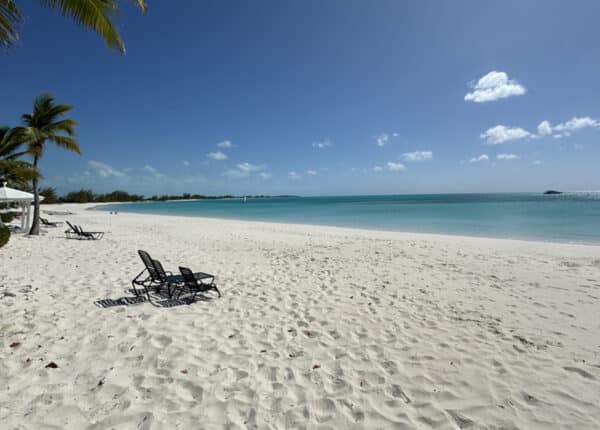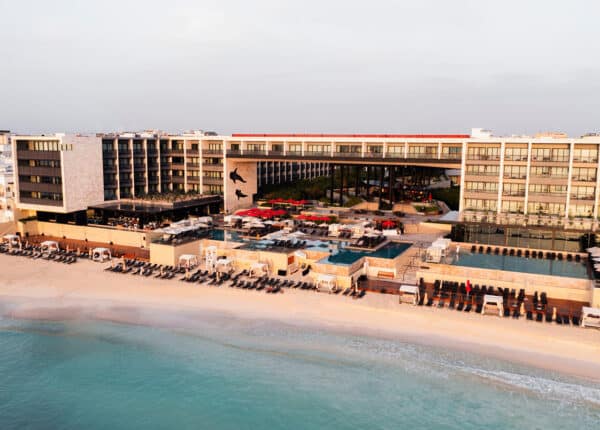The Future of The Caribbean’s Informal Shipping Sector
What’s in store for small shippers?
By George Nicholson and Nnyeka Prescod
Op-Ed Contributors
The face of global maritime trade has changed considerably over the past few decades.
The dawn of containerisation in the mid-20th century, together with the recent development of New Panamax and Triple E vessels has facilitated the annual transportation of billions of tonnes today.
Notwithstanding this evolution, the maritime industry is still dominated by liners and tramp shipping, or ships that do not have a fixed schedule or published ports of call. While this may be so, the changes in the industry particularly with respect to the increase in the size of vessels plying the Caribbean, present challenges not only for regional governments and ports, but also for local shipping and its survival.
The industry is currently facing significant pressure, due to its own lack of competitiveness and to a regional governance focus that has turned its attention towards large scale shipping.
The Caribbean has had a long history of inter-island maritime shipping with efforts to develop regional shipping industry ever since the formation of the West Indies Federation in 1958. The particular geography of the Caribbean makes shipping indispensable for facilitating domestic trade.
Accordingly the governments of the day in recognizing that establishment of maritime connectivity between the islands would underpin their economic development, launched the West Indies Shipping Company (WISCo.) in1963. The company, which was owned jointly by several of the islands, operated two ships which visited every island twice monthly providing a crucial sea-link between the islands expanding intra-community trade among the islands of the region.
The service, while successful in expanding trade between the islands themselves and also the USA, failed to make a profit and was subsidised by the governments. The service collapsed in 1992, some 29 years after its inception as regional government were no longer able to support the service.
The expansion of the Panama Canal is now expected to drive a new phase for the development of the shipping industry in the Caribbean; however the advent of bigger ships will likely provide challenges for the region. While there has been a shift by the bigger ports to capitalise on opportunities in the transhipment business, this shift is likely to propagate a growth in ship size within the feeder network. Evidence suggests that there will be some marginalisation as the larger shipping lines consolidate their activities in a few main ports to reduce operating costs. In this regard, it is the small local ship operator that will likely continue to provide the services that the islands depend on. Development of the feeder network itself however, will provide opportunities for rationalizing of the regions informal shipping services, thus presenting itself as a viable option for the future viability of the regions smaller ports.
Despite the uncompetitive nature of the industry which led to the collapse of WiSCo, other services have been established to facilitate trade within the basin. Today the regional marine transport sector is comprised of both a formal and a less well organised “informal” group, typically referred to as the schooner sector.
In the former, services are provided by international shipping lines providing access from the islands directly to the USA or Europe, and to regional hubs as well as other islands the region now enjoys approximately 170 regular shipping services, with over 650 vessels in operation, distributed over approximately 70 shipping lines, with a total fleet capacity of over 2,100,000 TEUs.
The informal or schooner sector, active mostly in the Leeward and Windward islands, is characteristically a local industry with local operators operating small ships with cargo capacity of less than 500 tonnes. It is this service that is of significant importance to smaller islands in the region.
The small vessels typically operate in a particular trade and run what is in essence a liner service with some regularity. The length of the voyage is determined by the trade that the vessel is in rather than the size of the vessel itself. These vessels are usually converted fishing boats or small roll on-roll off (ro-ro) ships with ramps, allowing cargo to be moved on board by forklift or small trailer and then stowed conventionally. The informal services provide almost all the small parcel, break-bulk and cargo movements between the islands.
The vessels carry local produce, personal effects, small scale industrial products, empty containers as outgoing cargo, construction material and manufactured goods for retailers.
Despite its dominant niche-market position, the industry is generally in decline although thriving well in a few territories.
The market is highly fragmented with limited coordination among stakeholders as well as little public sector support for its development. Much of the business is conducted informally, relies on knowledge of the captain or the agency to approach. The lack of strategic development plans for the industry and in related cross cutting sectors such as agriculture and tourism, coupled with weak regulatory oversight have not served to facilitate its growth.
While the regional shipping industry currently appears to be at risk from external pressures, the opportunity for its survival may well lie in the same factor which led to the formation of the West Indies Shipping Corporation: intra-regional trade. Data on trade in CARICOM shows that intra-regional trade accounts for approximately 14% of total trade compared to over 60% for the European Union and intra-regional exports represent only 6% of the regions total trade.
A closer examination reveals that while this value is negligible for some member states it is quite significant to others as for some countries intra-regional exports accounts for upwards of average 30% of their total exports. The figures however suggest that there is significant room for the enhancement of internal trade with the region. This has for a long time, suffered from high costs for moving goods; due in part to poor connectivity, small thin economies, the unidirectional nature of trade between the islands, and the effects of taxation and internal inefficiencies.
As a result transport costs and insurance within the region are 30% higher than the world average and maritime transport costs in the Caribbean are almost twice the global average.
The development of a customs union and the free circulation of goods within the Eastern Caribbean economic space may well provide the catalyst for the provision of more enhanced local shipping services driving development of more services available, and reducing the cost of the same.
Reductions in the cost of shipping will likely lead to a reduction in cost of goods available and thus spur growth in intra-regional trade. Notwithstanding this, it must be accepted that the operators in the informal sector will need to improve their own efficiencies in order to survive possible competition.
With the support of more appropriate legislation however, the regional schooner services could have operating costs that will make them competitive in this new global environment.
Note: the opinions expressed in Caribbean Journal Op-Eds are those of the author and do not necessarily reflect the views of the Caribbean Journal.







